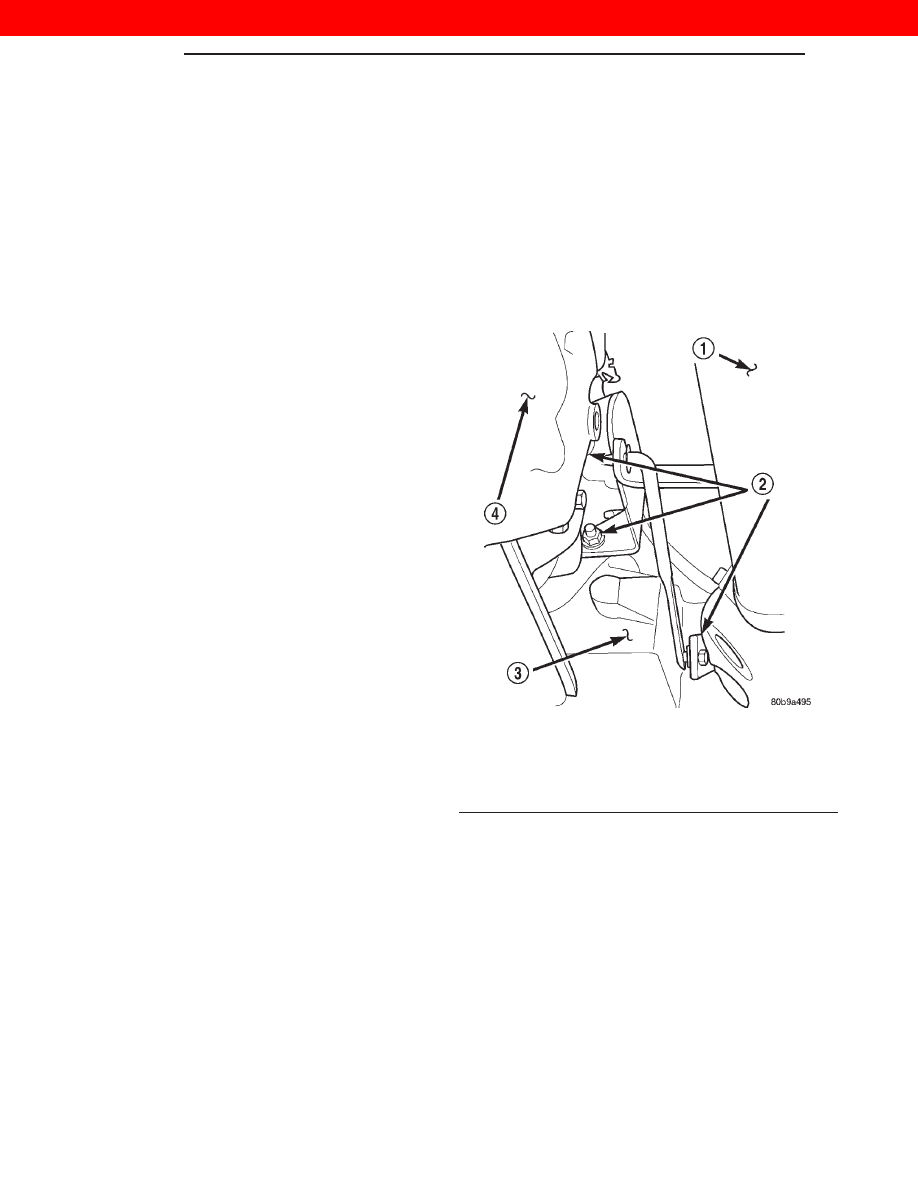Jeep XJ. Manual - part 318

(38) Disconnect the electrical connectors and the
vent hose and from the transfer case and transmis-
sion.
(39) Support the rear of the transmission with a
jack.
(40) Remove the transmission support crossmem-
ber.
(41) Lower the transmission to gain access to the
transmission to engine retaining bolts.
(42) Remove all the bolts securing the transmis-
sion to the engine assembly. Remove the transmis-
sion and the transfer case assembly from the vehicle.
(43) Lower the vehicle from the hoist.
(44) Remove the fan shroud and both cooling fans
as an assembly.
(45) Remove the oil filter and adaptor from the
vehicle as an assembly.
(46) Remove the power steering fluid pressure line
from the steering gear.
(47) Disconnect the electrical connectors from the
bottom of the fuel / water separator.
(48) Drain the fuel / water separator. Refer to
Group 9, Fuel System for the procedure.
(49) Remove the fuel lines from the fuel / water
separator and cap.
(50) Remove the fuel / water separator and mount-
ing bracket assembly from the bulkhead.
(51) Remove all the remaining wiring from the
engine assembly and position it out of the way.
(52) Attach a lifting device to the engine lifting
brackets and slightly raise the weight off the engine
mounts.
(53) Remove the right and left engine mount
throughbolts.
(54) Carefully lift the engine out of the engine
compartment.
INSTALLATION
(1) Carefully place the engine assembly into the
engine compartment..
(2) Install the engine mount throughbolts and nuts
in there original position. Leaving them loose at this
time.
(3) Install the fuel / water separator and mounting
bracket on the bulkhead.
(4) Install the fuel lines on the fuel / water sepa-
rator.
(5) Connect the electrical connectors to the bottom
of the fuel/water separator.
(6) Install the power steering fluid pressure line
on the steering gear.
(7) Install the oil filter and adaptor on the engine.
Torque adaptor retaining bolt to 69 N·m (51 ft. lbs.).
Fill the oil filter prior to installation.
(8) Install the fan shroud and both cooling fans as
an assembly in the vehicle.
(9) Raise the vehicle on a hoist.
(10) Install the transmission and transfer case
assembly in the vehicle.
(11) Install the bolts securing the transmission to
the engine assembly. Torque to 74.6 N·m (55 ft. lbs.).
(12) Position, connect and secure all electrical con-
nectors and vent hoses on the transfer case and
transmission in there original positions.
(13) Install the transmission support crossmember.
Torque bolts to 50 N·m (37 ft. lbs.).
(14) Install the (3) nuts retaining the transfer case
shift linkage (Fig. 20).
(15) Install the clutch slave cylinder on the clutch
housing, making sure the cylinder pushrod is prop-
erly aligned with the clutch fork (Fig. 21).
(16) Connect the exhaust system at the (3) bolt
flange (Fig. 22).
(17) Install the exhaust system support clamp
(Fig. 22).
(18) Install the rear driveshaft in its original posi-
tion.
(19) Install the front driveshaft in its original posi-
tion.
(20) Install the lower fan shroud panel and retain-
ing bolt.
(21) Install the engine ground wire (Fig. 23).
(22) Lower the vehicle from the hoist.
Fig. 20 Transfer Case Shift Linkage — 4x4
1 – FRONT DRIVESHAFT
2 – SHIFTER LINKAGE RETAINING NUTS
3 – TRANSFER CASE
4 – TRANSMISSION
9 - 20
ENGINE
XJ
REMOVAL AND INSTALLATION (Continued)
2000 JEEP CHEROKEE